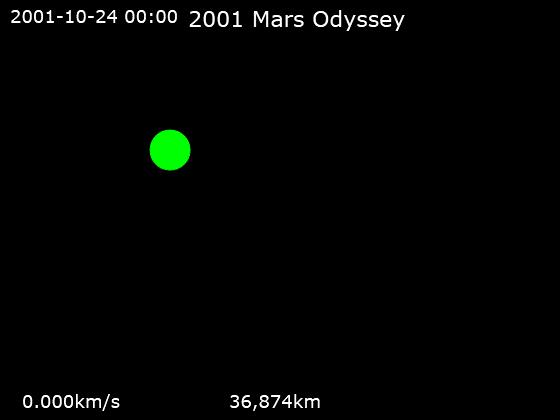|
2001 Mars Odyssey
''2001 Mars Odyssey'' is a robotic spacecraft orbiting the planet Mars. The project was developed by NASA, and contracted out to Lockheed Martin, with an expected cost for the entire mission of US$297 million. Its mission is to use spectrometers and a thermal imager to detect evidence of past or present water and ice, as well as study the planet's geology and radiation environment. The data ''Odyssey'' obtains is intended to help answer the question of whether life once existed on Mars and create a risk-assessment of the radiation that future astronauts on Mars might experience. It also acts as a relay for communications between the ''Curiosity'' rover, and previously the Mars Exploration Rovers and ''Phoenix'' lander, to Earth. The mission was named as a tribute to Arthur C. Clarke, evoking the name of his and Stanley Kubrick's 1968 film '' 2001: A Space Odyssey''. ''Odyssey'' was launched April 7, 2001, on a Delta II rocket from Cape Canaveral Air Force Station, and ... [...More Info...] [...Related Items...] OR: [Wikipedia] [Google] [Baidu] [Amazon] |
Areocentric Orbit
An areocentric orbit is an orbit around the planet Mars. The ''areo-'' prefix is derived from Ares, the Greek equivalent of the Roman god Mars. The name is analogous to the term geocentric orbit for an orbit around Earth and heliocentric orbit for an orbit around the Sun. As with these other orbits, the apsides of an areocentric orbit are sometimes called by specialized names: the pericenter is named periareon (analogous to perigee) and the apocenter is named apoareon (analogous to apogee). The first artificial satellite to orbit another planet — the U.S. probe ''Mariner 9'' — entered areocentric orbit on 13 November 1971. Within a month, Mariner 9 was joined in orbit by two Soviet orbiters: ''Mars 2'' (27 November 1971) and ''Mars 3'' (2 December 1971). See also * Areostationary orbit *Heliocentrism *List of orbits This is a list of types of gravitational orbit classified by various characteristics. Common abbreviations List of abbreviations of common Earth orbit ... [...More Info...] [...Related Items...] OR: [Wikipedia] [Google] [Baidu] [Amazon] |
